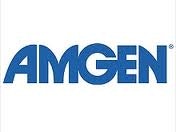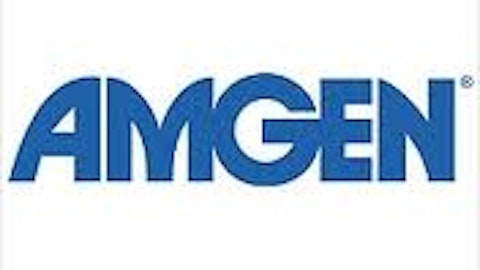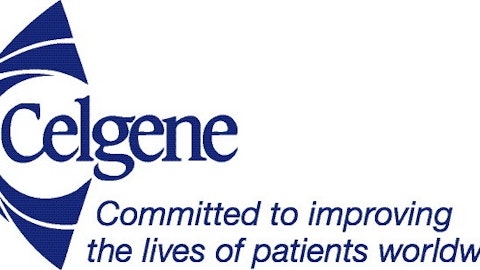You want to invest in biotech. You hear about all the monstrous pops and mini-fortunes that are built overnight. The allure of catching a multibagger is an intoxicating idea — netting one in your portfolio is even better. Simply put, the biotech industry offers investors something that few other investments can. So no one can blame you for targeting the next big stock.
However, that doesn’t mean you get to cheat on the simple rules of investing. My fellow Fools have done an excellent job keeping biotech investors honest recently. Keith Speights laid out a list of pitfalls for beginners to avoid, while Dr. Brian Orelli reminded investors that not every press release is necessarily newsworthy. Today, I want to remind investors that diversity is still important within a biotech-heavy portfolio. Here’s my ultimate biotech diversification strategy that focuses on three different kinds of growth.
Don’t set sail without an anchor
Every portfolio needs a group of core holdings to weather out storms and net steady long-term gains. Amgen, Inc.(NASDAQ:AMGN) is an easy choice for any biotech portfolio. I was tempted to include Johnson & Johnson (NYSE:JNJ) for its impressive suite of biologics on the market, but biotech investors may not want hip implants in their portfolio, so we’ll stick with Amgen. The $80 billion behemoth has increased its focus in recent years by bringing intriguing compounds into its pipeline, and should have no problem heading higher for the long-term.

Grab some “easy” growth
Don’t chase microcap companies hoping they’ll change the world. The market has become pretty good at vetting platforms and pipelines of small companies, so there’s probably a good reason for their lowly valuations. There’s nothing wrong with taking on some risk, but I believe investors are much better off tackling secure growth. Celgene Corporation (NASDAQ:CELG) and Gilead Sciences, Inc. (NASDAQ:GILD) offer just that — and world-changing potential to boot. Take a look at how they’ve crushed the market in the past year.
They are perfect examples that big market caps don’t put an end to growth. Celgene Corporation (NASDAQ:CELG) has an astonishing late-stage pipeline and is expecting results from over 10 phase 3 trials in 2013 alone. One promising drug candidate is Apremilast, an oral treatment being investigated in multiple autoimmune studies. While biologics have proved to be a successful option for many patients, they often must be injected. Thus, Apremilast could offer convenience on top of improved efficacy and safety. Data from phase 3 trials completed in 2013 have met primary and secondary endpoints and give investors plenty to look forward to — and it’s just one product candidate in the pipeline.
Gilead is a leader in HIV/AIDS and hepatitis C treatments with a similarly impressive pipeline. And talk about growth: The company increased first-quarter net income 64% from 2012 to 2013. Luckily for investors, things are just getting started. The company’s sofosbuvir for hepatitis C could hit megablockbuster status with peak annual sales of $5.8 billion by 2018. Gilead could also see huge revenue from Stribild, a four-in-one combination treatment for HIV treatment, if it can leapfrog other combination treatments in the market. The convenience of taking one pill versus two may help doctors switch patients in the long term.
Acknowledge the future
When thinking about biotechnology I like to encourage investors to take a big-picture approach that goes beyond pharma. Dozens of industrial biotech companies will produce commercial quantities of chemicals, fuels, fragrances, personal-care products, nutritionals, and more by the end of the decade. Two of the more promising investments currently within reach of investors are Solazyme Inc (NASDAQ:SZYM) and Amyris Inc (NASDAQ:AMRS)
Solazyme is developing a heterotrophic algae platform for the production of fatty acids in various renewable oil profiles. The company ended March with $239 million in cash and is completing commercial scale facilities on three continents. It will take time to ramp up production, but revenue will skyrocket after going from virtually no capacity this year to 125,000 metric tons of capacity by mid-2015.
Amyris Inc (NASDAQ:AMRS) is an intriguing option for its potential, although it is not as healthy financially. The company actually began in biopharmaceuticals and created the first commercial synthetic biology process for creating the anti-malaria drug precursor artemisinic acid. Now the pioneer is focused on producing commercial quantities of the chemical building block farnesene, which has applications in a multitude of applications.
Both Solazyme Inc (NASDAQ:SZYM) and Amyris Inc (NASDAQ:AMRS) have a lot to prove in terms of commercial production and profitability, but with a combined market cap south of $1 billion they will both handsomely reward early investors over the long term if they’re successful.
Foolish bottom line
These are just five companies that offer all three phases of growth: steady, medium, and high (but risky). Amgen, Inc.(NASDAQ:AMGN) is a great company trading at a tremendous discount to current and future earnings potential. Both Celgene Corporation (NASDAQ:CELG) and Gilead have tremendous growth ahead of them, which will one day enable market-beating dividends. And while newcomers Solazyme Inc (NASDAQ:SZYM) and Amyris Inc (NASDAQ:AMRS) are leading the pack of newly public industrial biotech companies, each comes with considerable risk. Nonetheless, these five companies offer a great diversification strategy for any investor.
The article The Ultimate Biotech Diversification Strategy originally appeared on Fool.com.
Fool contributor Maxx Chatsko has no position in any stocks mentioned.Check out his personal portfolio or his CAPS page, or follow him on Twitter, @BlacknGoldFool, to keep up with his writing on energy, bioprocessing, and emerging technologies. The Motley Fool recommends Celgene and Gilead Sciences (NASDAQ:GILD) and owns shares of Solazyme.
Copyright © 1995 – 2013 The Motley Fool, LLC. All rights reserved. The Motley Fool has a disclosure policy.


